How To Get Rid Of A Hickey: 14 Fast-Acting Natural Remedies
Get rid of love bites with a cold compress, a massage, or some natural ingredients.

Image: Shutterstock
If you are surfing the net looking for how to get rid of hickeys quickly, you have come to the right place. Hickeys or love bites are bruises that result from extreme suction or biting the skin hard. While it feels great in the moment of passion, these dark marks can stick out and make you feel embarrassed. To spare yourself from that misery, we have discussed some natural remedies to get rid of your hickeys quickly and conceal them effortlessly. Keep reading to know more!

In This Article
What Is A Hickey? What Causes It?
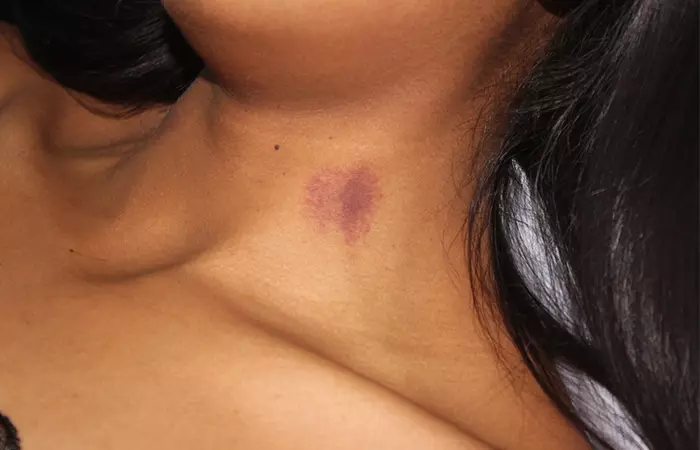
Hickeys are temporary marks that appear on an individual’s skin as a result of being sucked hard or bitten. A hickey occurs when the tiny blood vessels below the skin surface burst and leak in the surrounding tissues. They can occur almost anywhere on the body.
The affected skin usually looks decolorized and may be tender to touch. You may also notice pink, red, or purplish patches on the site of the hickey. As the lesion heals, you will see it turning a dark shade of blue.
A blogger shared his personal experience with hickey. He recounts in his blog post, “She didn’t let go of me for a good 60 seconds and what blood cells she wasn’t killing, were running to other parts of my body (i).” He continues and shares, “Evidently the blood vessels are closer to the surface of the skin the closer to the neck you get.”
Key Takeaways
- Use an ice pack or cold compress to lessen edema and enhance blood flow.
- Use clothing or makeup to cover up the hickey.
- To loosen the blood clots, gently massage the afflicted area using a toothbrush or comb.
- To improve healing and encourage blood flow, apply a warm compress.
- Ibuprofen is a popular pain reliever used to reduce pain and swelling.
- Cover the hickey with foundation or concealer.
- To assist the blood vessels in returning to normal, apply vitamin K cream.
How Long Do Hickeys Last?
These stubborn bruises may take anywhere between a few days to even weeks to heal completely. Unfortunately, if the hickey happens to be anywhere around the neck, it might make things awkward for you at work. But worry not – we have listed below certain natural remedies for bruises that help heal hickeys. While there is no instant fix for a hickey, these remedies may accelerate healing.
14 Natural Ways To Get Rid Of A Hickey
Note: These home remedies to get rid of a hickey may not work for everyone, and when used the results may vary for each individual. Since these use natural ingredients, it is also important to note that some of them may even cause skin irritation or allergic reactions. Always perform a patch test first to check for any allergies or adverse reactions.
1. Cold Compress
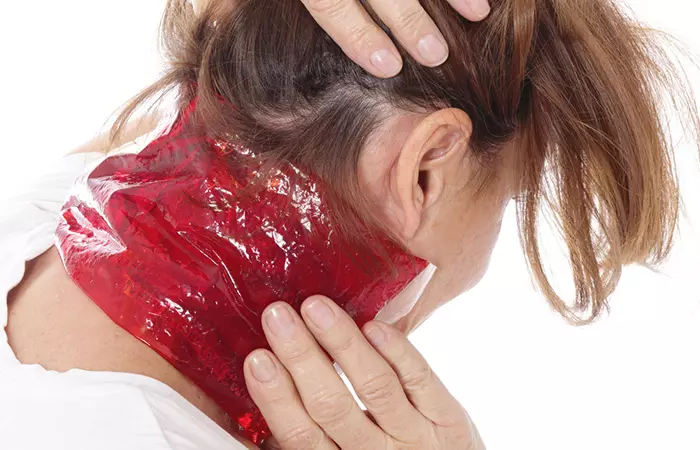
Are you wondering how to get rid of a hickey fast? The answer is cold press, because it is believed that applying a cold compress to a swollen area may reduce the swelling. The cool temperature may help in slowing down the blood flow from the blood vessel to the skin (1). Applying a cold spoon or ice to the hickey may help in shrinking its appearance. However, this procedure is more likely to be effective when used as soon as the hickey appears.
You Will Need
- A cold spoon or ice
What You Have To Do
- Take a spoon and refrigerate it for 30 minutes.
- Apply the cold spoon to the affected area.
- Stroke the hickey slightly using the spoon for a few minutes.
- Alternately, stroke a cube of ice on the hickey for a few minutes.
How Often You Should Do This
You may do this 2-3 times daily.
2. Warm Compress
A warm compress can be your pick if you are wondering how to remove a love bite. Applying a heat compress to the hickey two days after its appearance may help in speeding up the healing process. Using a heat compress may promote blood circulation to the affected area (1). And this is how to remove a hickey instantly.
Note: A cold compress is helpful when the lesion is fresh to minimize its spread. A hot compress helps once it has settled to accelerate recovery.
You Will Need
- A warm compress
What You Have To Do
- Apply a warm compress to the affected area.
- Leave it on for 5-10 minutes and remove it.
How Often You Should Do This
You can do this 2-3 times daily.
3. Massage
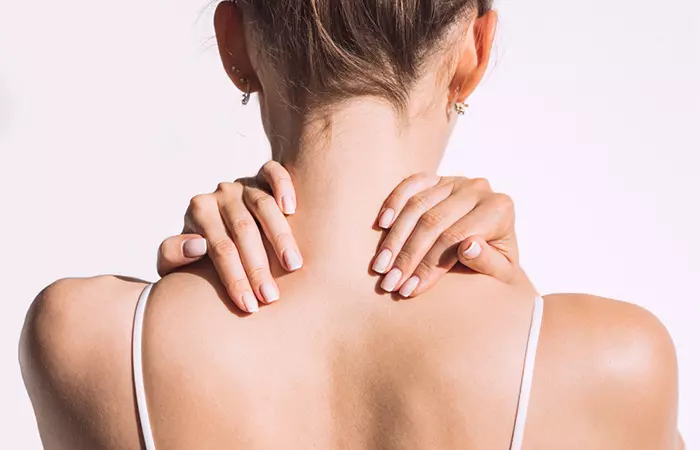
Research suggests that massages may reduce pain and stimulate blood flow, accelerating the healing process (2). The increased blood flow may also help you get rid of a hickey. However, a light massage on the affected area is advised. Excess pressure may make the hickey worse.
You Will Need
- An essential oil
What You Have To Do
- Take 2-3 drops of the essential oil in your palm.
- Massage the bruised area lightly without applying too much pressure.
How Often You Should Do This
Twice a day
 Quick Tip
Quick Tip4. Aloe Vera
Aloe vera is the best soothing option if you are wondering about how to remove love bite marks? It possesses anti-inflammatory and wound-healing properties (3). Hence, the topical application of aloe vera may help heal hickeys.
You Will Need
- An aloe leaf
What You Have To Do
- Extract the gel from the aloe leaf.
- Mash the gel with a spoon and apply it to the hickey.
- Leave it on for 15-20 minutes and then rinse it off.
How Often You Should Do This
You may do this 2 times daily.
5. Cocoa Butter
Cocoa butter contains phytocompounds that impart anti-inflammatory and skin-protective effects (4). These properties may help relieve hickeys.
You Will Need
- Organic cocoa butter (as required)
What You Have To Do
- Take a little cocoa butter on your fingers.
- Apply it to the affected area.
- Massage the area gently to get rid of a hickey.
How Often You Should Do This
You can do this multiple times daily for faster results.
6. Arnica
Arnica is a great way if you are looking for how to remove love bite marks quickly. It is a botanical extract rich in antioxidants (5). It is widely used for healing bruises and swelling (6). Hence, topical or oral use of arnica may help in reducing the appearance of a hickey.
You Will Need
- Arnica (in the form of an over-the-counter topical cream)
What You Have To Do
- Apply the topical ointment to the affected area.
- Alternately, you can also take arnica orally in the form of homeopathy medicine.
How Often You Should Do This
If you are using the cream, apply it in the suggested quantities and frequencies. Consult a healthcare provider if you are going for the homeopathy medication.
7. Banana Peel Mask

Banana peels are the most accessible options if you are thinking about how to remove hickeys. It exhibits antimicrobial activity, which may prevent infection in the affected area (7). It is a popular remedy for warts, rashes, and bruises (8). It also may help heal a hickey.
You Will Need
- A fresh banana peel
What You Have To Do
Rub the peel over the hickey for 5-10 minutes or simply place it over the affected area for 20 minutes.
How Often You Should Do This
Repeat this 2-3 times a day.
8. Eucalyptus Essential Oil
Oils like eucalyptus and olive oil are great options to remove love bite marks because they have wound-healing properties (9). These could help treat hickeys.
You Will Need
- 2-3 drops of eucalyptus oil
- 1 teaspoon of olive oil
What You Have To Do
- Add two to three drops of eucalyptus oil to a teaspoon of olive oil.
- Mix well and apply it to the affected area.
- Leave it on until it dries to get rid of a hickey.
How Often You Should Do This
You can do this 2-3 times daily.
9. Peppermint Oil
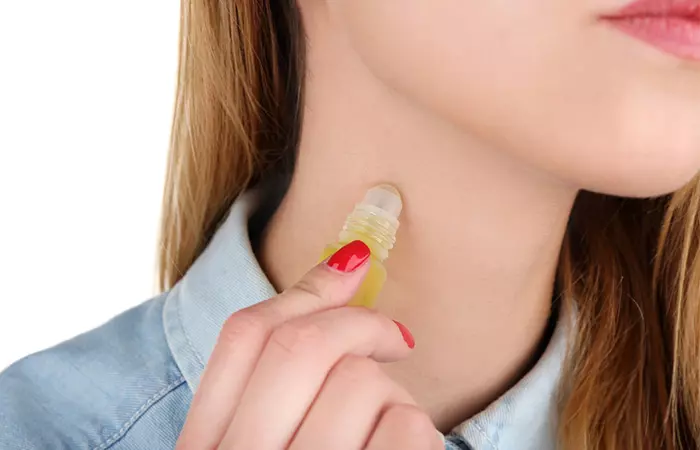
If you are surfing on the net about how to get rid of hickeys fast, you will see peppermint oil on the list. As one of the essential oils for bruises, it is known to increase blood flow in the human body (10). Hence, it may help in reducing the size and severity of a hickey.
You Will Need
- Peppermint essential oil
- Carrier oil (coconut or olive oil)
What You Have To Do
- Take 1-2 drops of peppermint oil.
- Add 10-12 drops of the carrier oil.
- Apply the oil mixture to the affected area and massage for 5-10 minutes.
How Often You Should Do This
You can do this once a day.
Note – Always do a patch test before applying the oils.
10. Bromelain
Bromelain is an enzyme found in pineapple. It is known to possess anti-inflammatory properties (11). Topical application of bromelain may reduce the development of bruises. It may help heal hickeys as well.
You Will Need
- Bromelain cream
What You Have To Do
- Apply the cream on the affected area.
How Often You Should Do This
Do this twice a day.
11. Orange Juice
Orange can be your choice if you want to know how to get rid of hickeys fast? It is replete with vitamin C. The nutrient may help treat bruises (12). It may help in the treatment of hickeys, though research is limited.
You Will Need
- Oranges
What You Have To Do
- Remove the pulp of the orange.
- Use a mixer to make its juice.
- Drink the juice.
How Often You Should Do This
Do this twice a day.
 Quick Tip
Quick Tip12. Vitamin K Cream
Vitamin K is known for its blood-clotting process in the human body (13). It is believed that the topical application of vitamin K cream may help heal hickeys. However, research is limited in this regard.
You Will Need
- Vitamin K cream
What You Have To Do
- Apply an ample amount of vitamin K cream to your hickey.
- Alternately, you may take vitamin K supplements or foods rich in vitamin K, including leafy greens or brown rice.
How Often You Should Do This
You may do this 1-2 times daily.
13. Aspirin
Aspirin is a great pick if you want to know how to remove love bite marks instantly. It aids in pain relief. It also has blood-thinning effects (14). Using aspirin may increase blood circulation in the affected area and speed up the recovery. However, it is important to take aspirin 24 hours after getting a hickey.
You Will Need
- Aspirin tablets
What You Have To Do
- Take the tablet regularly, as advised by your doctor.
How Often You Should Do This
Do this once a day.
14. Comfrey

Comfrey is a medicinal shrub native to Europe that has been used in traditional remedies for painful muscle and joint complaints. Research suggests it has anti-inflammatory effects and may promote wound healing to treat bruises (15). This may help you get rid of a hickey. However, more research is needed to thoroughly study these effects.
You Will Need
- Comfrey cream
What You Have To Do
- Apply a small amount of comfrey cream to a small area of skin to check for any adverse reactions.
- If you experience no irritation after 24 hours, apply a small amount of the cream to the hickey.
- Gently massage it into the hickey using your fingers.
How Often You Should Do This
Do this once or twice a day.
These remedies may help reduce the appearance of a hickey. However, not all of them have been validated by science. You may also want to consult your doctor before using certain medications and creams. Also, if you have had a hickey for longer than a couple of days, the remedies could take longer than usual to show their effectiveness.
Although there is no instant fix for a hickey, some tips may come in handy when you need to hide it for a few hours.
How To Hide A Hickey
- To cover up a hickey on the neck, wear a high-collar top. This will also cover the marks on the visible areas of your body, including your chest.
- Accessorize your clothing with a shawl or scarf to cover the bruise.
- If you have long hair, cover the hickey with it.
- You may use makeup to cover a hickey. Use a green/purple corrector, concealer, and a foundation to cover the hickey using makeup. Make sure the concealer and foundation match your skin tone.
Here is a step-by-step guide to help you cover a hickey with makeup:
- Start with clean, moisturized skin.
- Use a green color corrector to neutralize the redness of the hickey.
- Apply a concealer that matches your skin tone to cover the corrector.
- Blend the concealer well with a makeup sponge or your fingers.
- Set the concealer with a translucent powder to ensure longevity.
There are certain remedies you must not follow. Though these are popular, these are not effective – and may instead make your condition worse.
Home Remedies That You Should Avoid
- Rubbing with a coin – Pressing a coin on a hickey may replicate a massage. However, it will involve intense pressure, which will make the hickey worse.
- Rubbing with a lip balm cap – Another popular method is massaging with a lip balm cap. However, there is no evidence that this method could be effective on a hickey.
- Massaging with a toothpaste – Some believe massaging with a toothpaste can help. However, there is no evidence in this regard.
Infographic: Most Effective Natural Ways To Get Rid Of A Hickey
Hickeys can be uncomfortable and embarrassing as they are too obvious. However, there are many natural ways to treat them and make them disappear quickly. Check the infographic below to find the most effective natural remedies that can help heal hickeys quickly.
Some thing wrong with infographic shortcode. please verify shortcode syntax
A hickey is an eye-catching mark of your love that can last for days or weeks. Whether it is an embarrassing incident or you want to keep things under wraps, there are a few ways to accelerate their healing. Follow these simple home remedies to get rid of a hickey. These bruises can be reduced if you apply a hot compress or natural agents with wound healing and anti-inflammatory properties. These remedies need time to work and hence we suggest covering your hickeys with a high-collar top, accessories, or even make up for the time being. And while you can give the above-mentioned remedies a shot, you can keep a few more in mind as well, for instance, applying diluted tea tree oil or peppermint oil, or garlic paste to reduce the redness.
Frequently Asked Questions
Are there any risks in using home remedies for hickeys?
Certain home herbal remedies may lead to skin irritation for some individuals. So, it is important to conduct a patch test to ensure you are not allergic to any ingredient.
How can I make a hickey disappear ASAP?
There is no way you can make a hickey disappear magically. You have to follow various remedies and give it time to fade away.
How can I cover up a hickey?
From using makeup to wearing a high collared shirt, various ways can help you cover up your hickey.
Is a hickey painful?
Hickeys may feel sore for a day, and there may be a little bit of swelling. But they heal in a week or two and should not be painful.
Can hickeys cause health problems?
No, hickeys generally do not cause any serious problems. But they do run the slight risk of causing blood clots and strokes in some people.
Learn the best ways to get rid of a hickey fast. Watch this informative video to discover simple tips and tricks to remove those pesky love bites easily.
Personal Experience: Source
StyleCraze's articles are interwoven with authentic personal narratives that provide depth and resonance to our content. Below are the sources of the personal accounts referenced in this article.
i. Muffler Burns & Love Biteshttps://growinguponprytania.wordpress.com/2016/05/15/muffler-burns-love-bites/
References
Articles on StyleCraze are backed by verified information from peer-reviewed and academic research papers, reputed organizations, research institutions, and medical associations to ensure accuracy and relevance. Read our editorial policy to learn more.
- Malanga, Gerard A., Ning Yan, and Jill Stark. “Mechanisms and efficacy of heat and cold therapies for musculoskeletal injury.” Postgraduate Medicine 127.1 (2015): 57-65.
https://pubmed.ncbi.nlm.nih.gov/25526231/ - Pornratshanee Weerapong et al. “The mechanisms of massage and effects on performance, muscle recovery and injury prevention.” Sports Med . 2005;35(3):235-56.
https://pubmed.ncbi.nlm.nih.gov/15730338/ - Oryan, Ahmad, et al. “Topical application of Aloe vera accelerated wound healing, modeling, and remodeling: an experimental study.” Annals of plastic surgery 77.1 (2016): 37-46.
https://pubmed.ncbi.nlm.nih.gov/25003428/ - Scapagnini, Giovanni, et al. “Cocoa bioactive compounds: significance and potential for the maintenance of skin health.” Nutrients 6.8 (2014): 3202-3213.
https://www.ncbi.nlm.nih.gov/pmc/articles/PMC4145303/ - Craciunescu, Oana, et al. “Evaluation of antioxidant and cytoprotective activities of Arnica montana L. and Artemisia absinthium L. ethanolic extracts.” Chemistry Central Journal 6.1 (2012): 1-11.
https://bmcchem.biomedcentral.com/articles/10.1186/1752-153X-6-97 - Stevinson, C., et al. “Homeopathic arnica for prevention of pain and bruising: randomized placebo-controlled trial in hand surgery.” Journal of the Royal Society of Medicine 96.2 (2003): 60-65.
https://www.ncbi.nlm.nih.gov/pmc/articles/PMC539394/ - Kapadia, Suraj Premal, Pushpa S. Pudakalkatti, and Sachin Shivanaikar. “Detection of antimicrobial activity of banana peel (Musa paradisiaca L.) on Porphyromonas gingivalis and Aggregatibacter actinomycetemcomitans: An in vitro study.” Contemporary clinical dentistry 6.4 (2015): 496.
https://www.ncbi.nlm.nih.gov/pmc/articles/PMC4678547/?report=classic - Kumar, KP Sampath, et al. “Traditional and medicinal uses of banana.” Journal of Pharmacognosy and Phytochemistry 1.3 (2012): 51-63.
https://www.phytojournal.com/vol1Issue3/Issue_sept_2012/9.1.pdf - Saporito, Francesca, et al. “Essential oil-loaded lipid nanoparticles for wound healing.” International journal of nanomedicine 13 (2018): 175.
https://www.ncbi.nlm.nih.gov/pmc/articles/PMC5747963/ - Göbel, H., et al. “Essential plant oils and headache mechanisms.” Phytomedicine 2.2 (1995): 93-102.
https://www.sciencedirect.com/science/article/abs/pii/S094471131180053X - Seligman, Bert. “Bromelain: an anti-inflammatory agent.” Angiology 13.11 (1962): 508-510.
https://journals.sagepub.com/doi/abs/10.1177/000331976201301103?journalCode=anga& - Kalk, W. W. “Bruises, loose teeth and fatigue in a patient with schizophrenia.” Nederlands tijdschrift voor geneeskunde 149.32 (2005): 1769-1772.
https://europepmc.org/article/med/16121659 - Dowd, Paul, et al. “The mechanism of action of vitamin K.” Annual review of nutrition 15.1 (1995): 419-440.
https://www.annualreviews.org/content/journals/10.1146/annurev.nu.15.070195.002223 - DeDea, Larissa. “The antiplatelet effects of aspirin; nattokinase as a blood thinner.” Journal of the American Academy of PAs 23.12 (2010): 13.
https://journals.lww.com/jaapa/Citation/2010/12000/The_antiplatelet_effects_of_aspirin__nattokinase.2.aspx - Staiger, Christiane. “Comfrey: A clinical overview.” Wiley Journal of Phytotherapy Research 2012 Oct; 26(10): 1441–1448.
https://www.ncbi.nlm.nih.gov/pmc/articles/PMC3491633/
Read full bio of Dr. Hari Hara Sudhan
Read full bio of Sucharita Mishra
Read full bio of Ramona Sinha
Read full bio of Swathi E






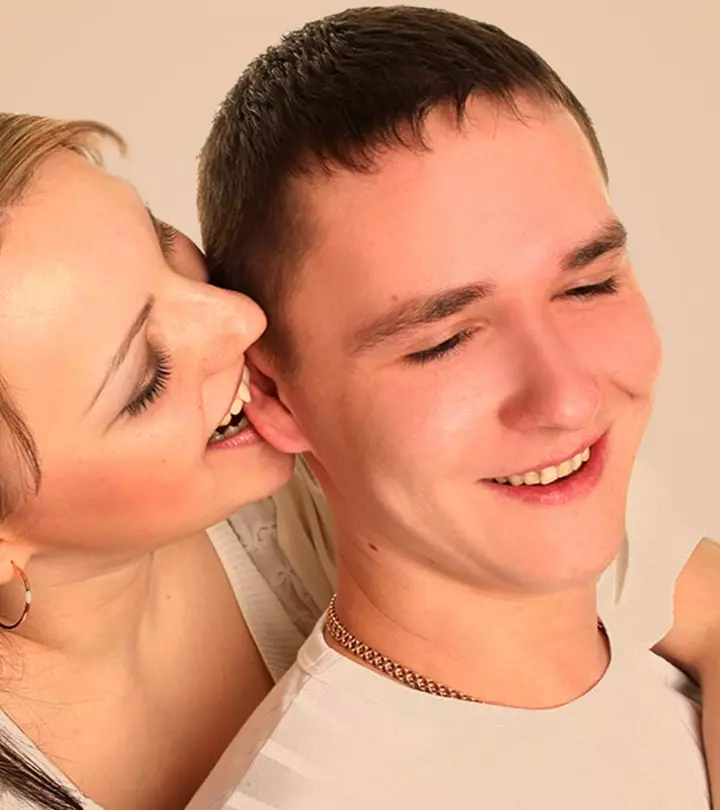

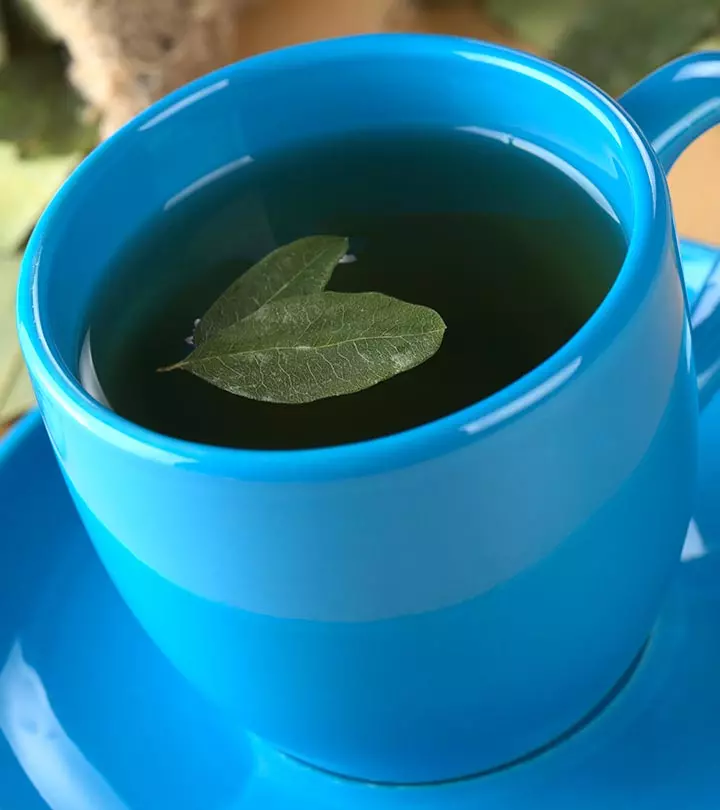

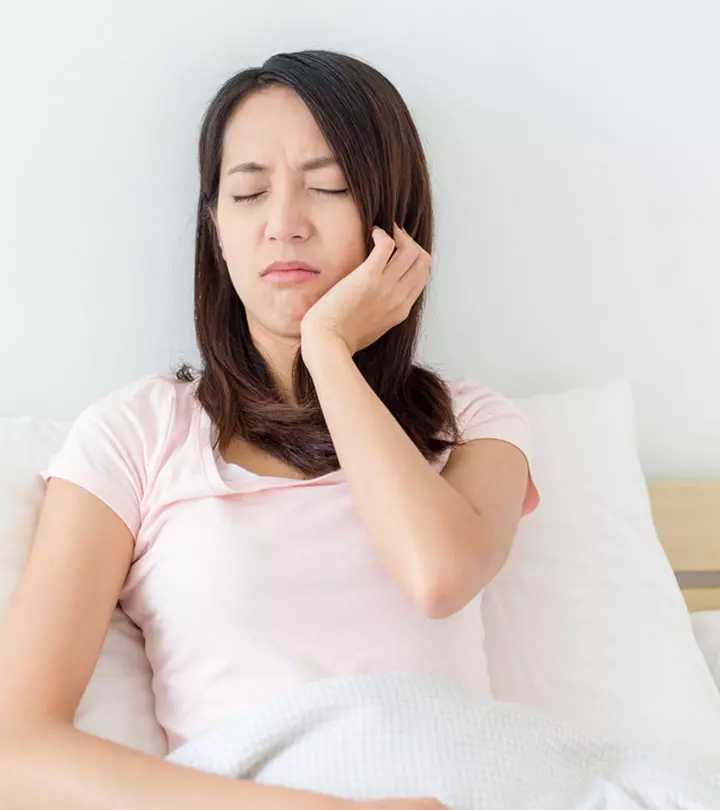
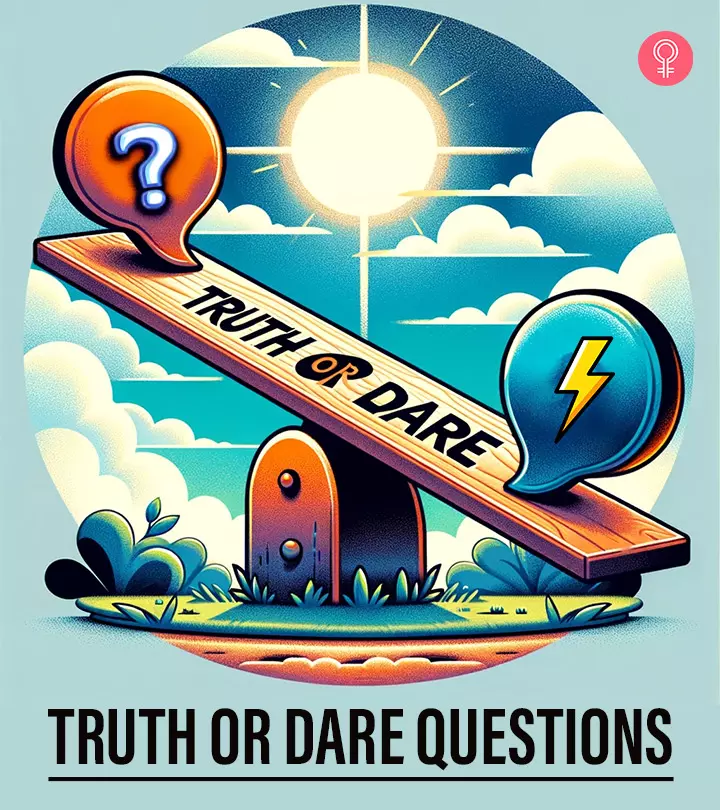
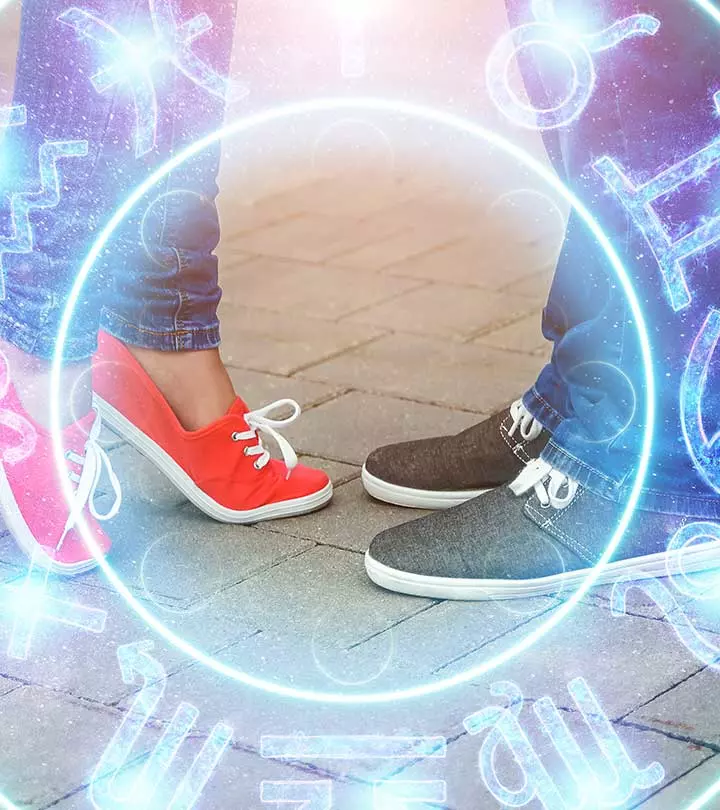

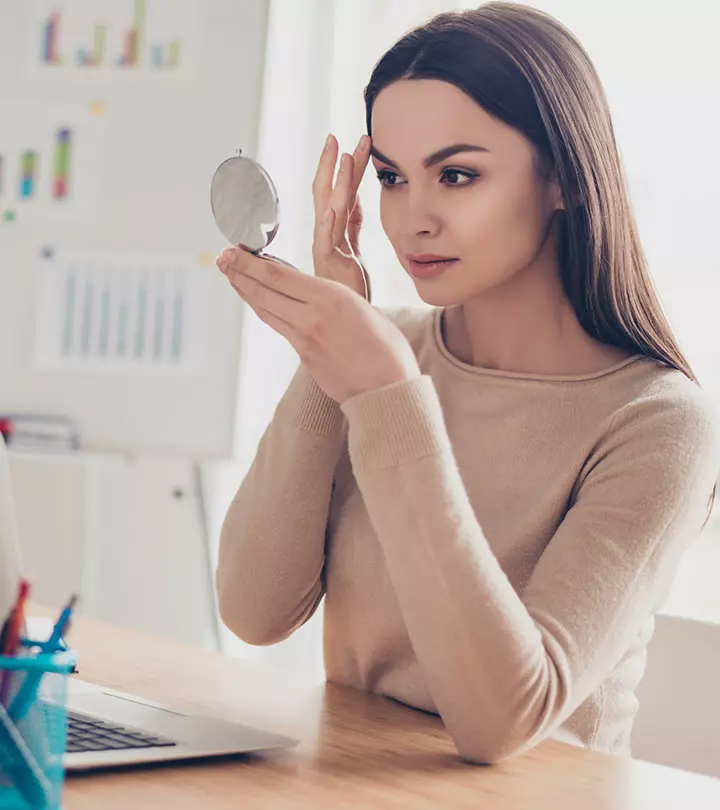

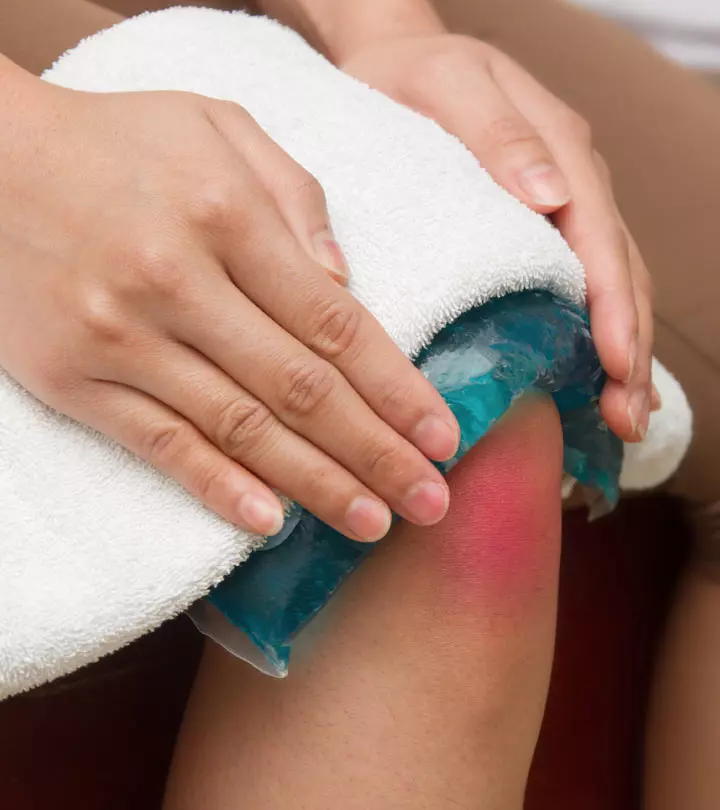
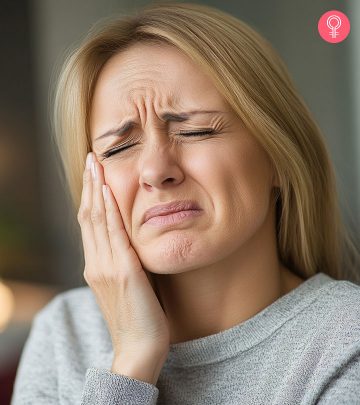




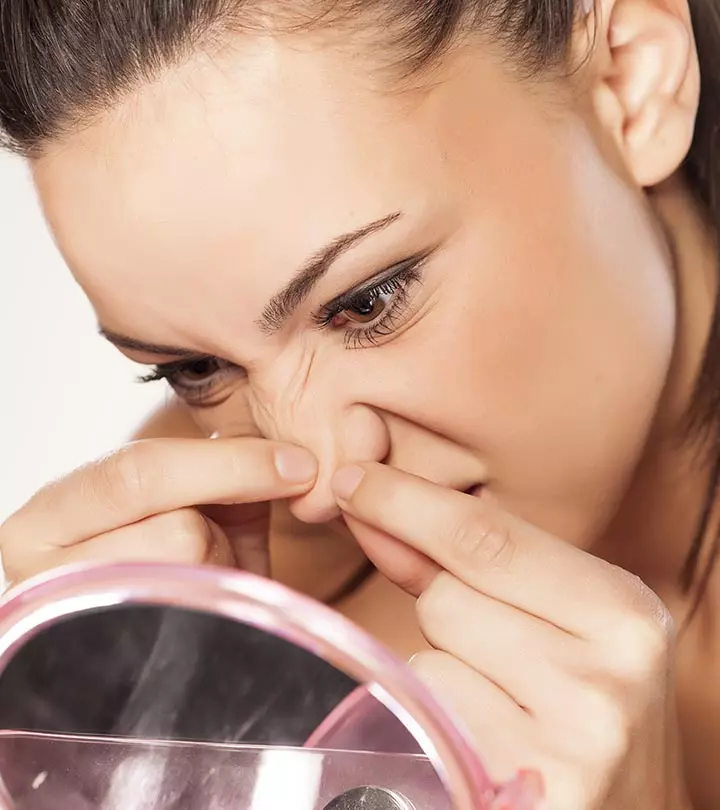



Community Experiences
Join the conversation and become a part of our empowering community! Share your stories, experiences, and insights to connect with other beauty, lifestyle, and health enthusiasts.